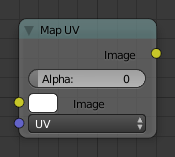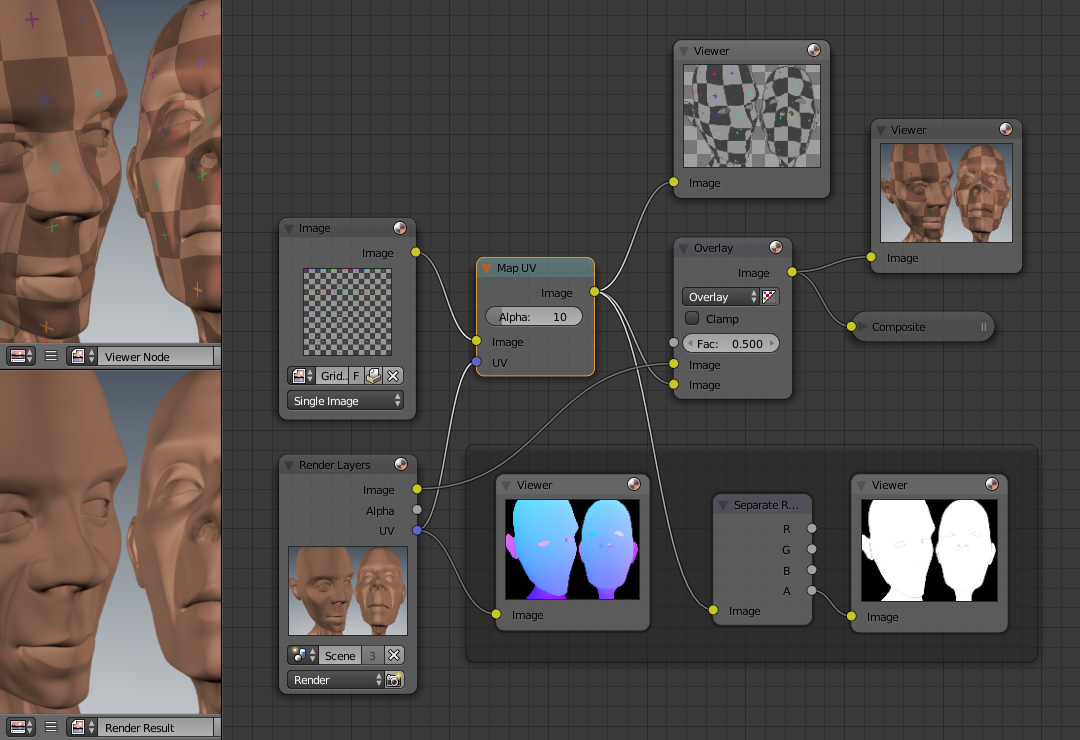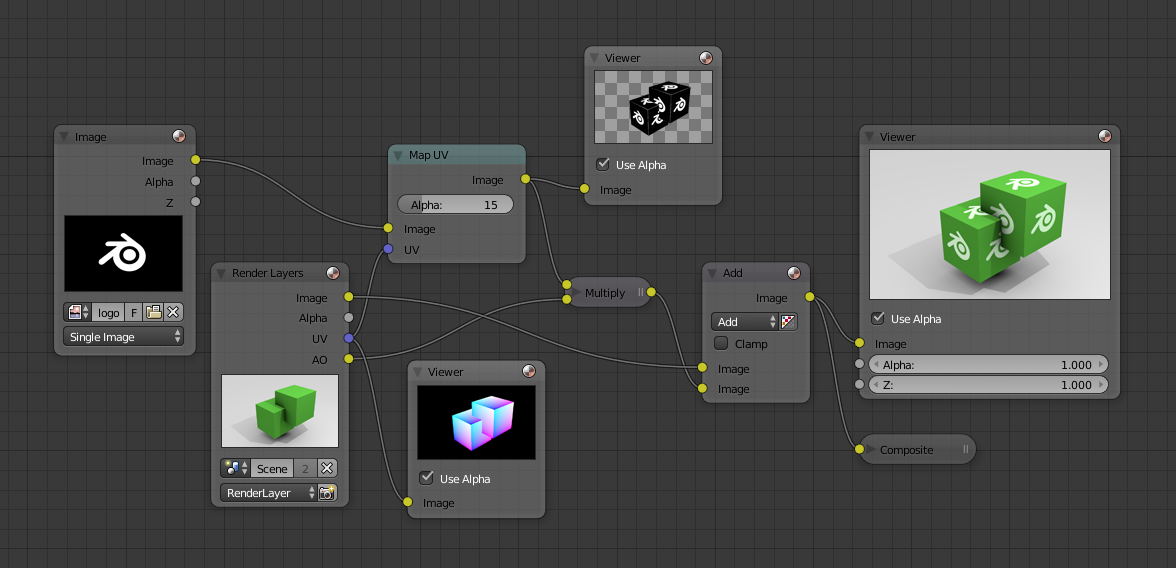Map UV Node¶

Map UV Node.
With this node objects can be “re-textured” after they have been rendered.
To apply a texture to individual enumerated objects the ID Mask Node could be used.
Inputs¶
- Image
- The new 2D Texture.
- UV
- The input for UV render pass. See Cycles render passes or Blender internal render passes.
Hint
To store the UV pass a multilayer OpenEXR format could be used.
Properties¶
- Alpha
- Alpha threshold is used to fade out pixels on boundaries.
Outputs¶
- Image
- The resulting image is the input image texture distorted to match the UV coordinates. That image can then be overlay mixed with the original image to paint the texture on top of the original. Adjust alpha and the mix factor to control how much the new texture overlays the old.
Hint
When painting the new texture, it helps to have the UV maps for the original objects in the scene, it is recommended to keep those UV texture outlines around even, when shooting is done.
Examples¶
In the example below, we have overlaid a grid pattern on top of the two heads after they have been rendered. During rendering, we enabled the UV layer in the Properties editor . Using a mix node (“Overlay” in figure), we mix that new UV Texture over the original face. We can use this grid texture to help in any motion tracking that we need to do.
In the next example, we overlay a logo on top of a cubie-type thing, and we ensure that we Enable the Alpha pre-multiply button on the Mix node. The logo is used as additional UV Texture on top of the existing texture. Other examples include the possibility that there was used an unauthorized product box during the initial animation, and it is needed to substitute in a different product sponsor after rendering.
Hint
Due to limits of this node, it is not recommended rush pre-production rendering under the guise of “fixing it later”.

